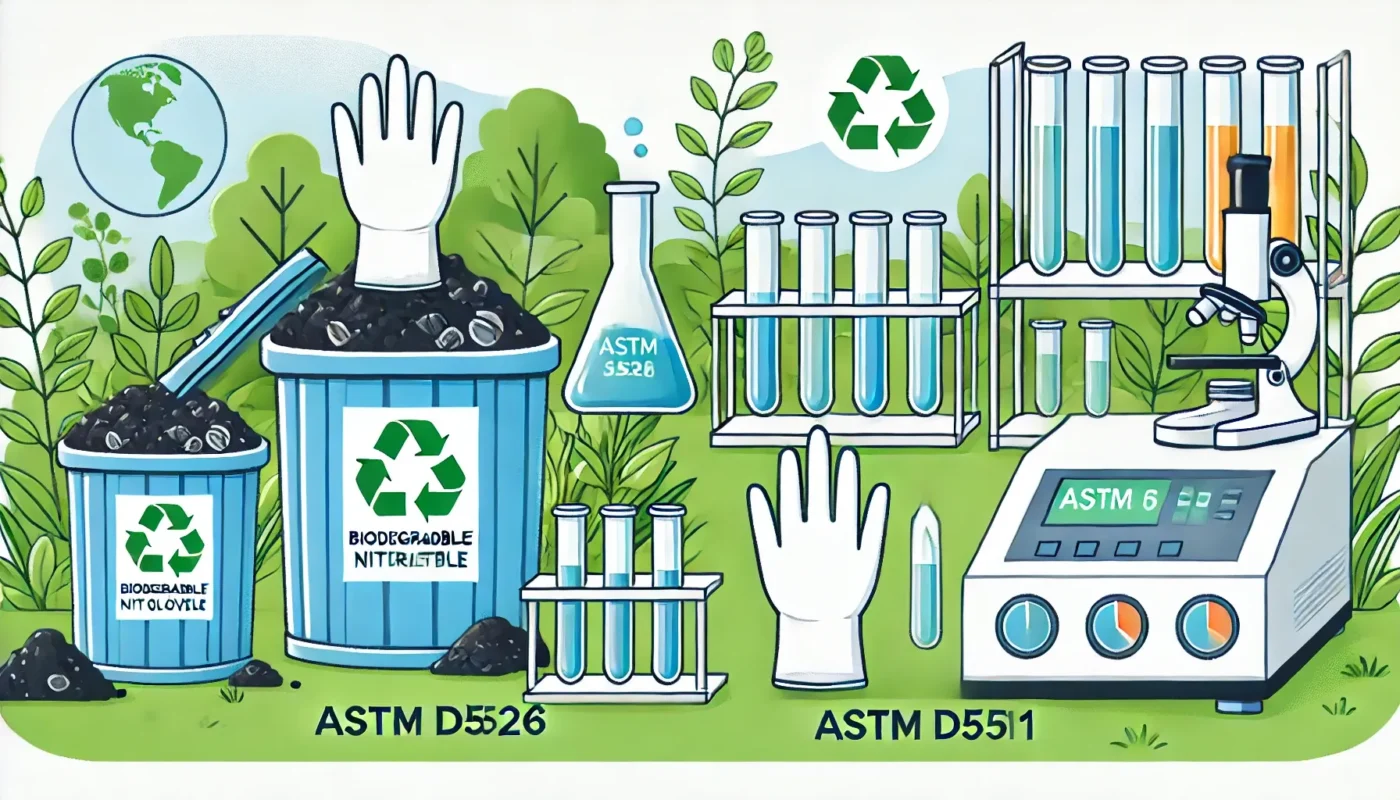What Is Biodegradable Nitrile?
Biodegradable nitrile rubber has been treated to break down more quickly in natural environments like landfills. Unlike untreated gloves that can take over a century to decompose, these treated gloves biodegrade much faster.
Understanding Testing Methods
To gauge how well biodegradable nitrile performs, it’s crucial to know how its biodegradability is tested. This helps in understanding competitors’ claims too. Two respected methods are used: ASTM D5511 and ASTM D5526, both established by ASTM International.
ASTM D5526: The Comprehensive Test
The ASTM D5526 test is preferred for its thoroughness. It simulates real-world landfill conditions over a long period, providing a more accurate assessment of a glove’s biodegradability. This test is more stringent and runs until the glove has fully broken down.
ASTM D5511: The Shorter Laboratory Test
The ASTM D5511 test is shorter and conducted under ideal lab conditions. Typically lasting 30 days, it estimates long-term biodegradability from short-term data. However, it’s often seen as a preliminary test while the longer ASTM D5526 test is ongoing, as its results might not reflect actual degradation times accurately.
Certification and Safety Standards
Biodegradable nitrile gloves meet the same safety and sustainability standards as untreated gloves. They are certified by organizations such as the FDA, European Council (CE), Underwriters Laboratories (UL), and Cradle to Cradle™ (C2C).
Frequently Asked Questions
What’s the Difference Between ASTM D5526 and ASTM D5511?
ASTM D5526 provides a more reliable, long-term biodegradation assessment under simulated landfill conditions. In contrast, ASTM D5511 offers a shorter-term evaluation under ideal lab conditions.
What Does “Break Down” Mean?
A material is considered broken down when it has released all its carbon gases and leaves no toxic residue.
Additional Testing Methods
- BMP Tests: Measure a material’s potential for biodegradation based on methane output from anaerobic bacteria.
- ASTM E1963: Assesses whether a material is toxic to plant life by monitoring plant growth in the presence of the material.
Detailed Test Descriptions
ASTM D5526:
This test, known as the Standard Test Method for Determining Anaerobic Biodegradation of Plastic Materials Under Accelerated Landfill Conditions, mimics landfill conditions with no oxygen. It measures the biodegradability by the percentage difference between the remaining solid material and the original sample after 2.5 years, showing a 92.6% breakdown.
ASTM D5511:
The Standard Test Method for Determining Anaerobic Biodegradation of Plastic Materials Under High-Solids Anaerobic-Digestion Conditions, this test runs under ideal lab conditions to maximize bacterial activity. ASTM warns against extrapolating long-term biodegradability from this test if ASTM D5526 results are available.
Certifications and Approvals
- ASTM E1963: Checks material toxicity to plants.
- BMP Tests: Measure potential methane output during biodegradation.
- CE Certification: Required for medical devices sold in Europe, ensuring nitrile gloves are suitable for high-risk environments.
- FDA 510k Approval: Confirms that the medical device is as safe as similar existing products.
- UL Certification: Ensures protection against bloodborne pathogens and chemical, biological, radiological, and nuclear agents.
- C2C Certification: Voluntary certification ensuring materials and processes are environmentally friendly.

